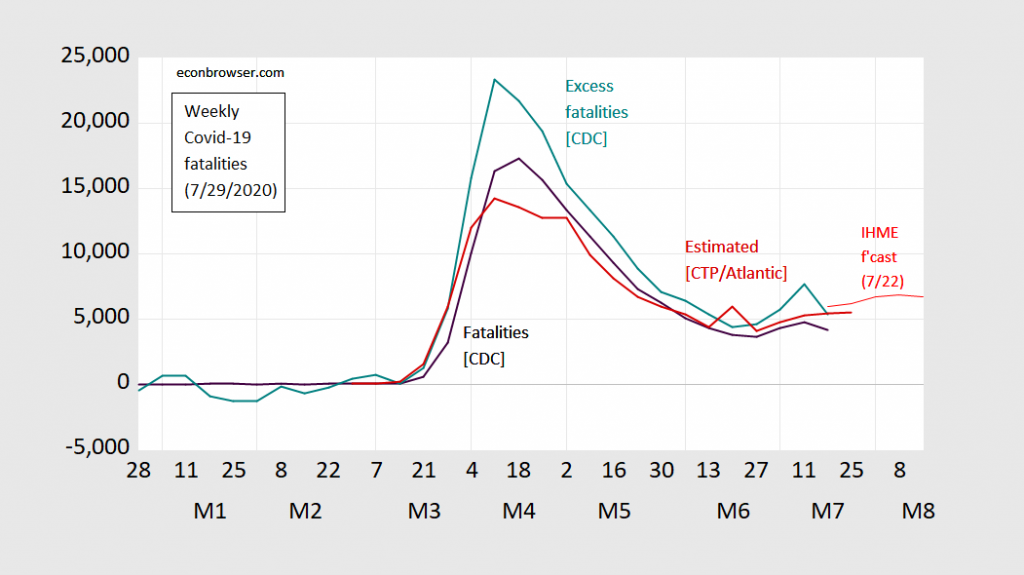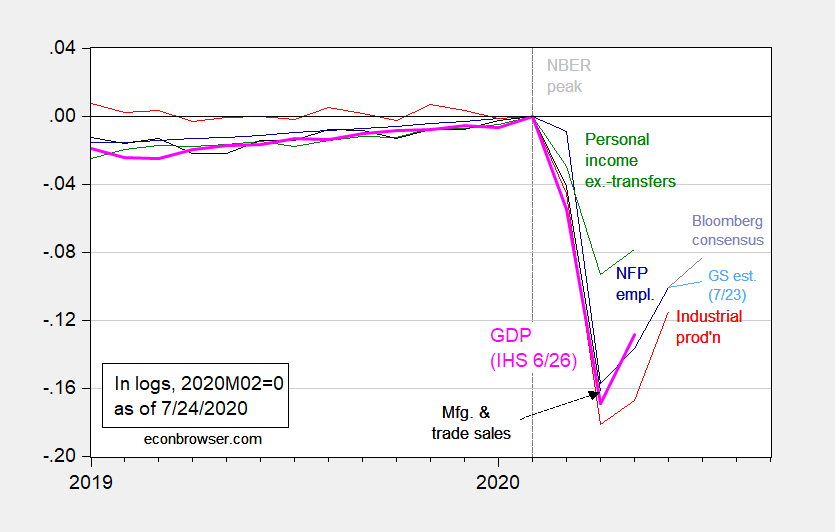From CDC, Atlantic/Covid Tracking Project, and IHME:
Figure 1: Weekly fatalities due to Covid-19 as reported to CDC for weeks ending on indicated dates (black), excess fatalities calculated as actual minus expected (teal), fatalities as tabulated by The Covid Tracking Project/Atlantic (dark red), IHME forecast (light red), all on log scale. Source: CDC 7/29/2020 vintage, Covid Tracking Project/Atlantic accessed 7/29/2020, IHME forecast of 7/22/2020, and author’s calculations.
Two observations: (1) the unofficial count is rising; (2) recent weeks’ (about a month’s worth) CDC data are subject to severe undercounting, so inferring recent trends on the basis of CDC data is not advisable.
From week ending February 29th through the week ending June 27th, the cumulative CDC fatality tally is 127.3 thousand. Cumulative excess fatalities is 164.8 thousand, implying an additional 37.5 thousand Covid-19 fatalities above the official tally over this period.


